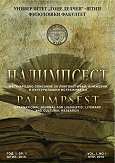«THE ROLE OF ANXIETY IN L2/LS LEARNING»
DOI:
https://doi.org/10.46763/PALIM20100073sAbstract
The role of the anxiety in learning an L2 / LS is often an underestimated problem not so much by educational linguistics and language teaching theorists, as by L2/LS teachers. This article aims to underline and demonstrate that this psychological variable can influence the results of an L2/ LS learner in different situations, such as the class context, the interactions with friends, colleagues and teachers. After an exposure and an analysis of the limited bibliographic references, this article tries to propose some language teaching approaches and methods that aim to reduce this insidious problem. Another purpose of this article is also to underline the fundamental role that the correction of errors has in any class context, a thorny issue much debated both by language teaching and by educational linguistics. Finally, the article treats the problem of the anxiety in an evaluation context. At the final part of the article, a list of possible practical techniques capable of reducing, if not eliminating, the apprehension of learners within their class context and in contact with the L2/LS they are learning.
Keywords: L2/LS learning, anxiety, stress, classcontext, evaluation context.


